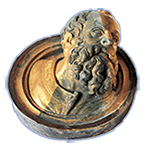Speaker
Description
Amphorae of the Haltern 70 type were produced mainly in the Roman provinces of Hispania Baetica and Lusitania in the south of modern Spain during the second half of the first century BC and the first century AC. On the other hand, a large number of sherds of such amphorae was found in excavations of a Roman settlement at Castro do Vieito in the northwest of Portugal. Presumably, these amphorae were used for transporting agricultural produce from the south to supply the Roman military stationed in the north. To test this hypothesis, we studied the element content of about 120 amphora sherds from Castro do Vieito and from the known kiln sites in Baetica and Lusitania, nowadays the Algarve coast and the valleys of the Guadalquivir river and the Rio Tinto, as well as the coast near Cadiz and Algeciras. By PGAA and in-beam NAA at the FRM2 reactor of the Technical University of Munich about 20 element contents were determined for each sherd. The aim of this work is to find similarities in the element contents of samples from the kiln sites and from Castro do Vieito that could prove that the amphorae from Castro do Vieito are from the south of Spain and possibly from which kiln site they preferentially came. The data are still being analyzed, but first results already seem to confirm this archaeological expectation. The data for Haltern 70 amphorae from the kiln sites may also help in the future to identify the origin of Haltern 70 amphorae found at other sites.

